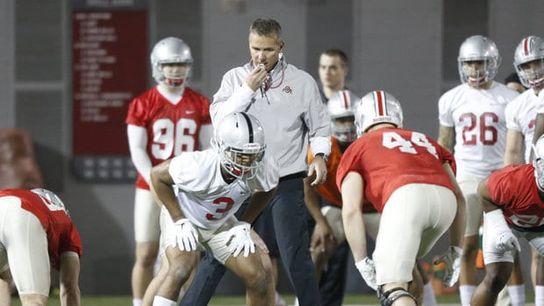From the late 2000s to the mid-2010s, the SEC combined its proximity to elite recruits with It Just Means More-commitment to winning to dominate college football. The conference won every national title from 2006-13 and, when including Clemson and Florida State, teams from the Deep South claimed all but one national title from 2006-22.
NIL changed the paradigm, allowing moneyed, name-brand schools from the Midwest to legally tilt the playing field in their direction. Those schools can use the tools at their disposal -- rich alumni across the nation, NIL, relaxed transfer rules -- to build rosters and retain players who otherwise would have turned pro to stay another year and chase a national title. That's how Michigan beat Washington to win the 2023 national title, and how Midwestern teams (Ohio State, Notre Dame, Penn State) occupied three of the final four spots in the 2024 CFP, and how another Big Ten team (Oregon) earned the No. 1 seed in the field.
That's the general theory of college football over the past 20 years, one shared by Urban Meyer.
In appearance on Another Dooley Noted Podcast, Meyer explained the same theory in his own words.
“Well, you know what the SEC’s done? It’s raised the level,” Urban Meyer said, via On3. “But the Big Ten has passed the SEC at the upper part. If you would have told me that 10 years ago, I would’ve said it’s not even close. Because it’s not.”
“When I first got to the Big Ten, even Shelley said, ‘What in the world? This is a slow man’s game up here,’ and I like to think that the Buckeyes really changed that. Then everyone else started investing in their schools,” Meyer continued. “And started recruiting the best player, not just the footprint. As a result, the Wolverine team two years ago was one of the best teams I’ve seen. The Buckeyes team this year is one of the best I’ve ever seen. You’re seeing Penn State, and some of these teams have great success.”
You know what Urban just did there? He gave himself credit for the rise of the SEC and the Big Ten.
The SEC started raising the level with Florida's 2006 national title. Remember, those Gators were heavy underdogs, considered at the time nothing more than cannon fodder for a juggernaut Ohio State team. Florida thrashed the favored Buckeyes, limiting Heisman Trophy winner Troy Smith to 35 passing yards en route to a 41-14 blowout. Indeed, it was a game-changing win, akin to grunge rock blowing hair metal off the radio overnight in the early 1990s. Florida won the title again in 2008, beating an undefeated Alabama team in the SEC Championship before limiting another unstoppable offense (Oklahoma this time) to 14 points in the BCS title game. Alabama eventually surpassed Florida and set a standard that will likely never be equaled -- but Florida pushed the Tide to that point first.
Meyer then knocked off No. 1 Alabama en route to the 2014 national title, the only crown won north of the Mason-Dixon Line from 2003 to 2022. It's a bit of a stretch to get from Ohio State's 2014 title team to 2023 Michigan, but he's not wrong in the way he talks about changing Big Ten recruiting. His presence changed the way the conference recruits from a gentleman's league to a year-round contact sport.
"Urban had won national championships at Florida," former Big Ten commissioner Jim Delany told ESPN upon Meyer's retirement in 2018. "He was from Ohio, played at Cincinnati, had success at Utah and had a national presence. Urban articulated the fact that this is a national game and you have to recruit nationally. You have to go after the best players, wherever they are, and I think our coaches have done that."
Did Urban Meyer's success at Florida and Ohio State elevate the entire sport of college football? Many people are saying it. Okay, one person is saying it, but I'm not sure he's entirely wrong.
